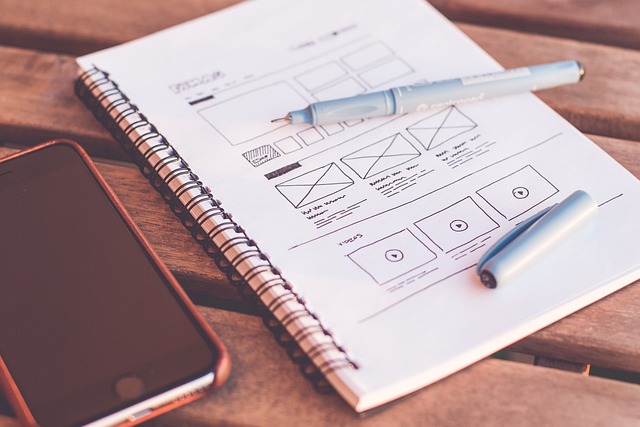Full-service web design offers a one-stop solution for businesses, integrating strategic planning, UX design, content creation, graphic design, development, and SEO. This approach streamlines project management, delivering visually appealing, efficient websites with improved cost control, faster turnaround times, and consistent quality. Key elements of successful full-service web design include comprehensive audits, intuitive branding, engaging content, and ongoing SEO optimization. Affordable packages can be achieved through strategic cost-saving measures like using templates, open-source solutions, and efficient resource allocation. Case studies provide valuable insights, and choosing the right agency with clear communication ensures a tailored process meeting unique needs. Ongoing maintenance and KPI tracking ensure the website remains secure, relevant, and aligned with business goals.
Discover the power of affordable full-service web design and how it can transform your online presence. This comprehensive guide explores the benefits of a one-stop solution, from initial concept to ongoing maintenance. We’ll break down the key components, cost-saving strategies, and essential tips for choosing the right partners. Learn from real-world case studies and ensure your website excels with effective communication and proven performance metrics. Unlock the potential of full-service web design to drive business growth online.
Understanding Full-Service Web Design: Unpacking the Concept

Full-service web design is a comprehensive approach that encompasses all aspects of creating and maintaining a website, from initial concept to final launch and ongoing support. It goes beyond basic coding and aesthetics by integrating various essential services under one roof. This includes strategic planning, user experience (UX) design, content creation, graphic design, web development, search engine optimization (SEO), and post-launch maintenance. The primary goal is to deliver a seamless digital experience that meets the unique needs of each client.
By offering full-service, web design agencies provide a streamlined process that simplifies project management for businesses. Clients can trust a dedicated team to handle every detail, ensuring a website that not only looks visually appealing but also functions efficiently and achieves its intended business goals. This holistic approach allows for better cost control, faster turnaround times, and consistent quality throughout the development lifecycle.
Benefits of a Full-Service Approach for Your Business Website

A full-service web design approach offers numerous advantages for businesses looking to establish or enhance their online presence. By partnering with a single, experienced provider, companies can streamline the entire website development process, from concept creation to ongoing maintenance. This centralized strategy ensures consistent branding and messaging across all digital platforms, fostering a seamless user experience.
Full-service web design agencies bring specialized expertise in various aspects of web development, including graphic design, content writing, coding, search engine optimization (SEO), and more. This comprehensive skill set allows them to create not just visually appealing websites but also highly functional and optimized ones. They can tailor solutions to meet unique business needs, ensuring that your website aligns with marketing goals and delivers tangible results, driving traffic and increasing conversions.
Key Components of an Affordable Full-Service Web Design Package

When considering an affordable full-service web design package, several key components ensure a robust and effective online presence. Firstly, a comprehensive website audit is essential to understand your business’s digital needs. This includes evaluating your current site (if applicable), identifying goals, and assessing competitors to gather insights. A good design package should offer a detailed analysis, providing a solid foundation for the upcoming development process.
Additionally, an affordable full-service package typically covers intuitive website design tailored to your brand and target audience. Responsive web design, ensuring your site adapts seamlessly across devices, is non-negotiable. Content creation, including copywriting and image selection, plays a vital role in engaging users and search engines alike. Effective packages also include ongoing SEO optimization to enhance visibility, along with integration of analytics tools for measurable results.
Strategies to Keep Costs Low Without Compromising Quality

To deliver affordable full-service web design without sacrificing quality, designers and agencies must employ strategic cost-saving measures. One effective approach is to leverage existing tools and platforms that streamline the development process. Pre-built templates, content management systems (CMS), and drag-and-drop website builders reduce custom coding requirements, minimizing labor costs. Additionally, open-source solutions offer high-quality alternatives at no or low cost.
Another strategy is to optimize resource allocation. Prioritizing essential features over non-essential bells and whistles ensures the final product remains focused and efficient. Outsourcing non-core tasks like graphic design or SEO optimization can also reduce overhead. By carefully managing project scope, timelines, and team resources, full-service web design providers can deliver high-quality results while maintaining competitive pricing.
Case Studies: Successful Implementational Examples

When exploring affordable full-service web design, case studies offer valuable insights into successful implementational examples. These real-world applications demonstrate how strategic design choices, user-centric functionalities, and cost-effective solutions can combine to create impactful online platforms. By studying these cases, businesses can gain a clearer understanding of what works best in the industry, enabling them to make informed decisions tailored to their specific needs and budget constraints.
Each case study showcases unique challenges and how they were met with innovative full-service web design solutions. From enhancing user engagement through intuitive navigation to boosting conversions via compelling call-to-actions, these successful implementations highlight the versatility of a comprehensive design approach. By learning from these examples, businesses can anticipate outcomes, set realistic expectations, and achieve remarkable results in their own web design endeavors without breaking the bank.
Choosing the Right Agency or Freelancer for Your Project

When looking for an affordable full-service web design solution, selecting the right agency or freelancer is paramount to your project’s success. Start by clearly defining your needs and goals. Do you require a basic website or an e-commerce platform? Understanding these requirements will help narrow down potential candidates who align with your vision.
Research their portfolio and case studies to assess their expertise in delivering similar projects. Check client testimonials and reviews to gauge satisfaction levels and work quality. Additionally, consider communication and project management styles that best fit your expectations. Effective collaboration ensures a seamless design process tailored to your unique needs.
Effective Communication: Building a Strong Client-Designer Relationship

In the realm of full-service web design, effective communication is the cornerstone of a successful client-designer relationship. It begins with a thorough understanding of the client’s vision and goals, and it involves active listening and clear, consistent feedback throughout the design process. A good designer isn’t just creating a website; they’re building a partner in bringing the client’s ideas to life. This collaborative approach ensures that the final product aligns perfectly with the client’s expectations.
Through open dialogue, designers can uncover hidden needs and preferences, leading to a more personalised and effective web design. Regular updates, prompt responses, and transparent discussions about progress foster trust and ensure both parties are on the same page. This strong connection is vital for navigating any challenges that arise during development, ensuring a seamless and satisfying experience from concept to launch.
Maintenance and Updates: Ensuring Longevity of Your Website

When you invest in a full-service web design, maintenance and updates are integral components that ensure your website stays relevant and functional over time. Regular updates are crucial to keeping your site secure against emerging threats and vulnerabilities. The internet is an ever-evolving landscape, with new technologies and standards constantly emerging. A dedicated team behind your website ensures it incorporates these advancements, maintaining optimal performance and user experience.
Moreover, regular maintenance includes content refreshes, backup strategies, and performance optimizations. Fresh content keeps visitors engaged while backups safeguard against data loss. Optimizations improve loading times, enhancing user satisfaction and search engine rankings. By including these services in your full-service web design package, you’re not just getting a website; you’re securing an online presence that grows with you.
Measuring Success: Key Performance Indicators for Your Full-Service Web Design

Measuring success is paramount for any full-service web design project, as it helps to gauge the effectiveness and impact of the work. Key Performance Indicators (KPIs) provide a clear framework for evaluation, ensuring that the design aligns with business objectives. For instance, increased website traffic, reflected through metrics like unique visitors and bounce rate, indicates successful user engagement. Conversion rates, tracking how many visitors complete desired actions (e.g., purchases or sign-ups), are another critical KPI.
Social media integration and its impact on brand awareness should also be monitored. Engagement levels, including shares, comments, and likes, demonstrate the web design’s ability to foster online interactions. Moreover, regular analytics audits help identify areas for improvement, ensuring the full-service web design remains relevant and performs optimally over time.
